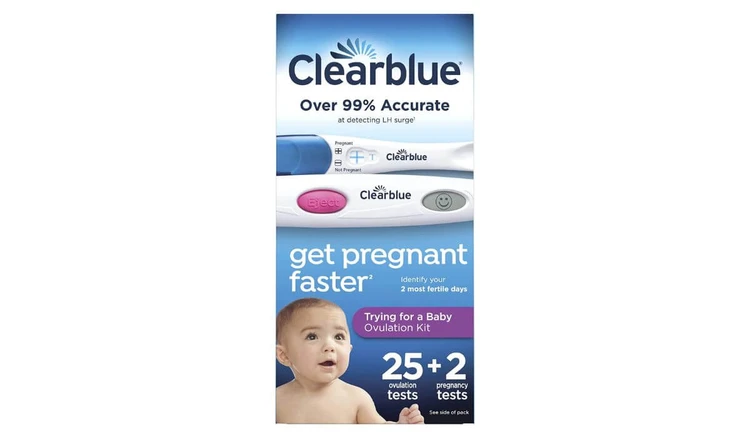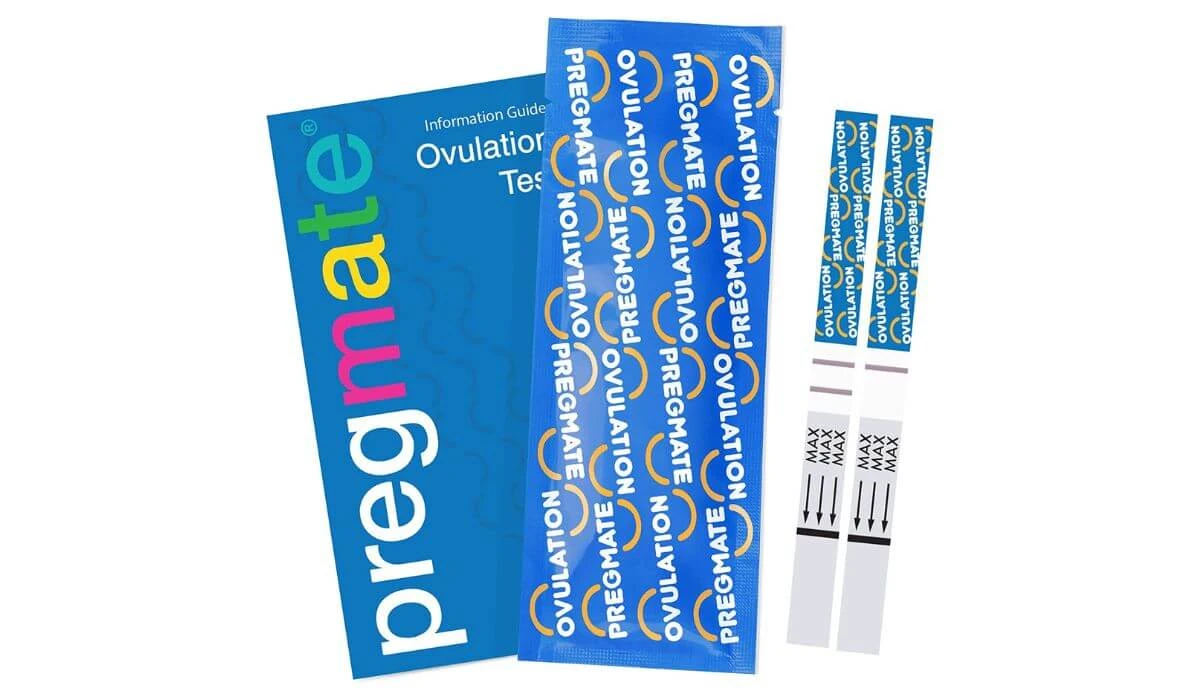Eager to learn everything you can before you take your first ovulation test? Babe we get it. It’s a big step in an exciting new direction! We cover everything from reading ovulation test strips results to the best brands to try.
Every ovulation test on this list has been individually chosen by our editors. We may also collect a small commission if you choose to use our affiliate links on this page, at no extra cost to you.
An ovulation test isn’t some kind of reproductive health pop quiz (phew) though it can feel nerve wracking.
If you’re a student at the School of TTC (Trying to Conceive) it can be a handy learning tool to help you get to know your body and the most fertile time in your cycle.
You know timing is everything and we know you want to get it right.
Hey, no pressure here. Right?
We’ve done the research into how do ovulation tests work (we even got an A from our trusted expert embryologist Navya Muralidhar) and written a study guide to help you nail your ovulation test with flying colors. 🤓
So, if you’re puzzled about what actually is an ovulation test, how it works, and when should you do it, read on to find out.
In this article: 📝
- What is an ovulation test?
- How do ovulation tests work
- How to use ovulation strips?
- When should I use ovulation test strips?
- How long after a positive ovulation test are you fertile?
- Are ovulation strip tests accurate?
- What are some of the best ovulation tests to try?
- Are ovulation tests worth it?
What is an ovulation test?
An ovulation test is a simple test you can do at home to help predict whether you’ll be ovulating soon.
Sometimes known as an ovulation predictor kit (OPK), it comes with a number of ovulation test strips which you can use to predict your fertility window.
These kits are widely available at most drugstores or online.
How do ovulation tests work
Ovulation tests work by detecting a surge in luteinizing hormone (LH) in your urine.
This is the hormone that tells your ovaries: Time to send out the egg now!
If the ovulation test picks up on this surge, it means you’re likely to ovulate in the next 24 to 36 hours.
Then all you need to do is light the candles, put on some music, and head to the bedroom…
How to use ovulation strips?
You’ll be pleased to know ovulation strips are super easy to use.
All you need to do is to pee on one of the strips or dunk it in a sterile container of urine.
What happens next depends on the type of OPK you have.
How to read ovulation test strips?
Reading your ovulation test strips results can vary, depending on your chosen ovulation test.
If your kit contains only ovulation strips, you would look to see if a test line appears next to the control line on the strip (after about 5 minutes).
When the test line shows up darker than (or as dark as) the control line, that’s a positive result and it means you’re likely to ovulate in the next 24 to 36 hours. Sweet!
On the other hand, if your kit comes with a digital reader you would insert the stick into the reader and wait to see if a symbol is displayed to indicate a positive result. Fancy.
When should I use ovulation test strips?
Pee on a stick, got it. So, when should I take an ovulation test?
Well, ovulation occurs about midway through your menstrual cycle, meaning you’ll want to start testing a few days before that point.
If you are blessed with a regular 28-day cycle, you can expect to ovulate around day 14, so a daily ovulation test from day 10 or 11 would help you pinpoint when that egg will be released.
If you experience irregular cycles, knowing when to take an ovulation test can be a little tricker.
Say you have a 30-day cycle one month and a 35-day cycle the next – for the first month you might have ovulated on day 16 and the second on day 21.
Cue this face: 😕
Don’t worry, there’s ways to get around this.
You can:
- Use the length of your shortest cycle in the last 6 months to guide you. If that’s a 30-day cycle with an approximate ovulation date of day 16, you could start testing on day 12 to 13 of your current cycle.
- Test for a longer period of time. This tends to be more reliable than the method above. It may not be the most economical, but there are many OPKs online that comes with 10 ovulation test strips.
At least the actual ovulation testing is straightforward!
How long after a positive ovulation test are you fertile?
As a positive ovulation test result means that you’re likely to ovulate in 24 to 36 hours, you have approximately that amount of time plus about 12 to 24 hours after ovulation has occurred to make a baby.
Once you get a positive result, you don’t need to wait to have sex until the actual day of ovulation.
Sperm can survive for up to 5 days inside your body, so you can get going with baby-making whenever you’re ready!
If you’re also wondering: How many days post ovulation can you test for pregnancy?
The answer is it’s best to wait for about 14 days – until the date when you would expect your next period to start.
Are ovulation strip tests accurate?
When used correctly, an ovulation test can be up to 99% accurate.
Those are some nice odds.
But if you don’t want to leave anything up to chance, there are a few added things you can do:
- Take the test at the same time each day: You can even use an ovulation test strip twice a day if you wish but it’s recommended to test between 12pm and 6pm
- Test in the afternoon: Yes, we’ve all heard of the famous FMU (first morning urine) but modern fertility studies show that testing at 12pm is an even better time to catch your LH surge.
- Don’t drink too much before taking the test: Too much fluid can dilute the amount of LH in your urine and make detecting it much harder. So, take it easy on the green tea at least two hours before you intend to test.
- Familiarize yourself with the instruction booklet included: Every OPK is different so best to treat it like a brand new experience whenever you switch brand.
It’s important to note that a positive result means you’re highly likely to ovulate soon, but it doesn’t guarantee it will happen, or that conception will take place.
Certain drugs, such as birth control pills and fertility drugs, can also lead to an inaccurate test result.
If you’re taking medication, you could check with your doctor before using an ovulation test.
How do I know if I’m ovulating
While OPKs can be pretty accurate, ovulation tests work best when you’re looking at the whole picture.
Getting familiar with your monthly ovulation symptoms can be an excellent way of knowing when to use an ovulation test strip - it’s economic too.
Keep an eye out on the following signs of ovulation:
- Bloating
- Changes in cervial mucus
- Ovulation cramps
- Changes in basal body temperature (BBP). You’ll need a BBP thermometer for this one
- Increased libido. One of the more enjoyable symptoms 🍆
- Changes in cervix position
What are some of the best ovulation tests to try?
The number of different ovulation test kits out there can be a bit overwhelming, so we’ve picked 3 solid options to give you a flavor of what’s available:

Clearblue Digital Ovulation Test
This OPK contains a digital reader and 20 ovulation test strips, meaning it should last for several months.
Once you’ve inserted a strip into the reader, a result is shown in 3 minutes.
You’ll get a smiley face symbol pop up if an LH surge is detected.
This makes it more user-friendly than kits where you have to interpret a test line.
You’ll spot a lot of women sharing these on Peanut!

Easy@Home Ovulation Test Kit
For a comprehensive option, you could try this kit, which contains 50 ovulation strips and 20 pregnancy test strips.
There’s no digital reader, making the kit a good choice if you’re on a budget.
It’s designed to be used with a free ovulation predictor app, to help you keep track of your test results.

Pregmate Ovulation Test Strips
You can buy these ovulation test strips in packs of 50 or 100 so they’re particularly good value for money if your TTC journey is a little longer, or if you need to test on more days in your cycle.
Although a budget option, they’re still over 99% accurate.
Are ovulation tests worth it?
For many women, ovulation tests are a helpful and reliable way to identify the most fertile time of their cycle and boost their chances of conceiving.
Yes, it might involve messing about with little cups of urine a few days in the month, but it’s probably worth it for that cute, cuddly end result, right?
And hey, if you’re unsure about a reading ovulation test strips results, the Peanut TTC community has gotten pretty saavy at it.
It’s the perfect place to connect women like you.

